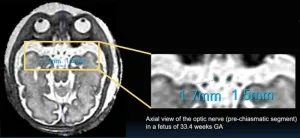(Press-News.org) Barcelona, Spain – 16 April 2023: A region-wide study in more than 50,000 patients with atrial fibrillation has found reduced risks of stroke and transient ischaemic attack in those who started statins within a year of diagnosis compared with those who did not. The findings are presented at EHRA 2023, a scientific congress of the European Society of Cardiology (ESC).1
“Our study indicates that taking statins for many years was even more protective against stroke than short-term use,” said study author Ms. Jiayi Huang, a PhD student at the University of Hong Kong, China.
Atrial fibrillation is the most common heart rhythm disorder, affecting more than 40 million people worldwide.2 Patients with the condition have a five times greater risk of stroke than their peers. Anticoagulant medication is recommended to prevent strokes in those with atrial fibrillation but does not completely eliminate risk. Statin therapy is widely prescribed to lower blood cholesterol and reduce the likelihood of heart attack and stroke. However, the benefit of statins for stroke prevention in patients with atrial fibrillation has been unclear.
This study evaluated the association between statin use and the incidence of stroke and transient ischaemic attack in patients with atrial fibrillation. The researchers used the Hong Kong Clinical Data Analysis and Reporting System to identify all patients with a new diagnosis of atrial fibrillation between 2010 and 2018. Participants were divided into two groups: statin users and non-users. Users had received statins for at least 90 consecutive days during the year after being diagnosed with atrial fibrillation.
The primary outcomes were the combined endpoint of ischaemic stroke or systemic embolism; haemorrhagic stroke; and transient ischaemic attack. Patients were followed until the occurrence of the primary outcomes, death or the end of the study on 31 October 2022.
A total of 51,472 patients with a new diagnosis of atrial fibrillation were included, of which 11,866 were classified as statin users and 39,606 were non-users. The median age of participants was 75 years and 48% were women. During a median follow up of five years, statin users had a significantly lower risk of all primary outcomes compared to non-users. Statin use was associated with a 17% reduced risk of ischaemic stroke or systemic embolism (hazard ratio [HR] 0.83; 95% confidence interval [CI] 0.78–0.89), a 7% reduced risk of haemorrhagic stroke (HR 0.93; 95% CI 0.89–0.98) and a 15% reduced risk of transient ischaemic attack (HR 0.85; 95% CI 0.80–0.90).
The researchers also found that long-term statin use was associated with greater protection than short-term use. Compared to those taking the medication for between three months and two years, patients using statins for six years or longer had a 43% lower risk of ischaemic stroke or systemic embolism (HR 0.57; 95% CI 0.54–0.61), 44% reduced likelihood of haemorrhagic stroke (HR 0.56; 95% CI 0.53–0.60) and 42% reduced risk of transient ischaemic attack (HR 0.58; 95% CI 0.52–0.64). These associations were consistent regardless of whether or not patients used anticoagulant medication and the type of anticoagulant.
Ms. Huang said: “These data support the use of statins to prevent stroke and transient ischaemic attack in patients with new-onset atrial fibrillation. The findings have important clinical implications particularly given that in atrial fibrillation patients, ischaemic strokes are often fatal or disabling, and have a high risk of recurrence.”
ENDS
END
Statin use is associated with lower risk of stroke in patients with atrial fibrillation
2023-04-16
ELSE PRESS RELEASES FROM THIS DATE:
ARRS Annual Meeting: 3D SVR MRI helps delineate fetal optic nerve pathway
2023-04-16
Honolulu, HI | April 16, 2023—An award-winning Scientific Online Poster presented during the 2023 ARRS Annual Meeting on the island of Oahu explained how the novel technique of three-dimensional (3D) slice-to-volume (SVR) MRI allows for precise delineation and measurement of the fetal optic pathway (FOP).
Noting the limited fetal presentation and low reproducibility of ultrasound-based techniques, as well as conventional MRI’s inconsistencies in FOP visualization due to low resolution (i.e., large slice thickness), “our preliminary results nevertheless demonstrate the promises and utility of this technique,” said Eric Juang, MS, of Creighton University ...
Erik Paulson gaveled in as president of American Roentgen Ray Society (ARRS)
2023-04-16
Honolulu, HI | April 16, 2023—Erik K. Paulson, MD, chair of the radiology department at Duke University, has been named the 123rd President of the American Roentgen Ray Society (ARRS) during the opening ceremony of the 2023 ARRS Annual Meeting in Honolulu, HI.
“I am absolutely honored and delighted to serve as the President of our country’s oldest radiology society, a society whose sweet spot is member education,” Dr. Paulson said in his ARRS Annual Meeting opening remarks at ...
UK strep A research shows highest incidence of invasive disease has shifted from the most deprived groups to the second most affluent group
2023-04-16
**Note: the release below is from the European Congress of Clinical Microbiology & Infectious Diseases (ECCMID 2023, Copenhagen, 15-18 April). Please credit the conference if you use this story**
Measures introduced to reduce transmission of COVID-19 infections during 2020-2021 suppressed transmission of group A streptococcal (GAS) infections, particularly in children. Following the lifting of public health restrictions in the UK in Feb-2022, Group A Streptococcus presentations – including scarlet fever and invasive Group A Strep – rose significantly in England, although iGAS still remained very ...
Surge of strep A infections, including more dangerous invasive type, has affected Denmark since late 2022, especially in the elderly
2023-04-16
**Note: the release below is from the European Congress of Clinical Microbiology & Infectious Diseases (ECCMID 2023, Copenhagen, 15-18 April). Please credit the conference if you use this story**
During the 2022-2023 winter season Denmark experienced a surge in infections caused by group A streptococci (GAS), including the more dangerous, invasive types of infections (iGAS). Incidence of iGAS is highest among the elderly, but the largest relative increase from previous seasons was seen among children. The study is being presented to the European Congress of Clinical Microbiology & Infectious Diseases (ECCMID 2023, Copenhagen, ...
Strep A infections among children surged in France across 2022, after nearly two-years of COVID-related low case numbers
2023-04-16
**Note: the release below is from the European Congress of Clinical Microbiology & Infectious Diseases (ECCMID 2023, Copenhagen, 15-18 April). Please credit the conference if you use this story**
New research from France shows that infections cause by Group A Streptococcus (GAS) fell by 80% as the first COVID lockdown took effect in March 2020 and stayed at low levels until March 2022, from which point they increased by 18% a month to rise well above pre-COVID levels.
The study is being presented at the European Congress of Clinical Microbiology & Infectious Diseases in Copenhagen, Denmark (15-18 ...
Scientists identify compounds that reduce the harmful side effects of antibiotics on gut bacteria
2023-04-16
**Note: the release below is from the European Congress of Clinical Microbiology & Infectious Diseases (ECCMID 2023, Copenhagen, 15-18 April). Please credit the conference if you use this story**
Antibiotics help to fight bacterial infections, but they can also harm the helpful microbes living in the gut, which can have long-lasting health consequences.
Now new research being presented at this year’s European Congress of Clinical Microbiology & Infectious Diseases (ECCMID) in Copenhagen, Denmark (15-18 April) has identified ...
Disturbed sleep may partially explain post-COVID condition (long COVID) breathlessness
2023-04-16
*Note: this is a joint press release from the European Congress of Clinical Microbiology & Infectious Diseases (ECCMID) and The Lancet Respiratory Medicine. Please credit both the congress and the journal in your stories*
A major UK study has discovered that the disturbed sleep patterns in patients hospitalised with COVID-19 was likely to be a driver of breathlessness.
The study of patients in 38 institutions across the UK was led by University of Manchester and Leicester, presented at the European Congress of Clinical Microbiology & Infectious Diseases (Copenhagen, 15-18 April) and published in The Lancet ...
Bacterial consortium therapy for prevention of recurrent c difficile infection
2023-04-15
About The Study: Among adults with laboratory-confirmed Clostridioides difficile infection (CDI) with one or more prior CDI episodes in the last six months and those with primary CDI at high risk for recurrence, high-dose VE303 (a novel oral microbiome-directed therapy composed of nonpathogenic, nontoxigenic, commensal strains of Clostridia) prevented recurrent CDI compared with placebo. A larger, phase 3 study is needed to confirm these findings.
Authors: Jeffrey L. Silber, M.D., of Vedanta Biosciences Inc., in Cambridge, Massachusetts, is the corresponding author.
To access the embargoed study: Visit our For The Media website at this link https://media.jamanetwork.com/
(doi:10.1001/jama.2023.4314)
Editor’s ...
Filtering pollution: A microfluidic device for collecting microplastics via acoustic focusing
2023-04-15
Plastic debris particles smaller than 5 mm in size, known as microplastics (MPs), are a serious environmental concern. Formed by the breaking down of plastic waste due to wear and tear and sunlight or produced by fiber waste in laundry wastewater and as microbeads in beauty products, they adsorb and introduce harmful chemicals that pollute the environment. By 2050, MPs might outnumber the fish in the oceans. Under these circumstances, the collection and removal of MPs from water are crucial.
Conventionally, MPs are collected by filtering water through meshes. ...
Detailed guidance on natural pacemaker method published today
2023-04-15
Barcelona, Spain – 15 April 2023: An international consensus statement on the safest and most effective way to implant a pacing system that mimics the heart’s normal function is published today in EP Europace,1 a journal of the European Society of Cardiology (ESC). The document is being launched at the EHRA Conduction System Pacing (CSP) Summit2 and will be discussed during EHRA 2023, a scientific congress of the ESC.3
“It is estimated that 1.4 million patients worldwide will receive a pacemaker in 2023,” said first author ...


